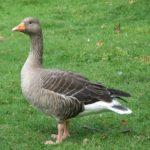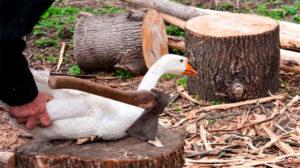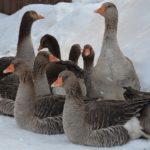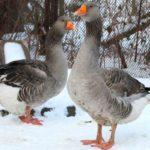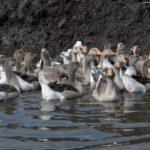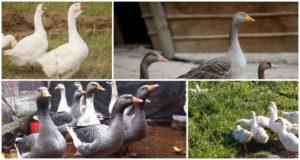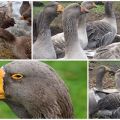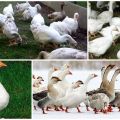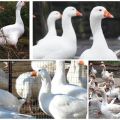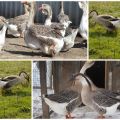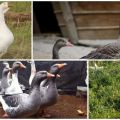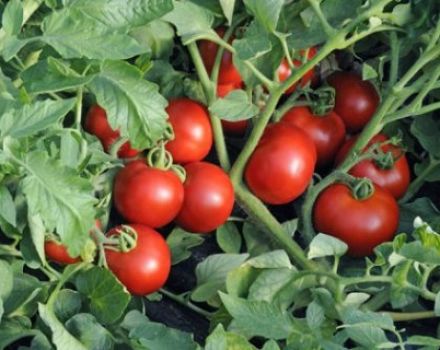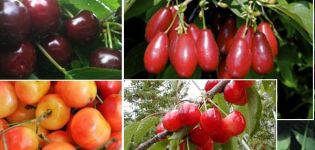Description and characteristics of Tambov gray geese and breed breeding
The breed of Tambov gray geese is included in the group of meat breeds. Due to its high productivity, the breed is popular not only in Russia and neighboring countries, but also in foreign countries. Consider the description and characteristics of the Tambov geese, the pros and cons of the breed, how to keep, look after the birds, and how to feed them. It will not be superfluous to learn how to breed and breed geese at home.
History of appearance
Breeding work on the breeding of the Tambov breed was carried out in the 30s. 20th century in Ukraine. The new variety was derived from the Romny and Toulouse breed. During the Great Patriotic War, the geese were taken to the Tambov region, where the creation of the breed was completed. Thus, in the Tambov breed, there are 2 intra-breed types - Ukrainian and Tambov geese. The feathers of both types are gray.
For the breeding stock, birds were selected that were able to quickly gain weight, were distinguished by their viability and fertility, and could be fed with feed with a low nutritional value. Gray geese are now used to breed new breeds that are distinguished by productivity and adaptability to the conditions of different climatic zones.
Description and characteristics of Tambov geese
Tambov geese are large, with a strong build, they have a long body, muscular chest, medium-length neck, large head. Thick beak, red-orange color, the same color of the metatarsus. A pronounced fold is visible on the belly of the birds. The feather is gray, darker on the back than on the head, top of the neck and chest. The belly is covered with a white feather. The weight of the geese of the Tambov breed is 7-9.5 kg, the geese - 6-6.5 kg. Females lay 3-4 dozen eggs, each weighing 160-180 g. The hatchability of goslings is 75%. Tambov geese are used by breeders as improvers, they get hybrid offspring of good quality.
Pros and cons
There are no flaws in the geese and geese of the Tambov breed.
Maintenance and care of birds
Geese of Tambov selection are raised in a poultry house, in which they should be spacious. An area of at least 0.5 m should be allocated for each bird. It is necessary to keep the room dry, warm and light. It should be bright even on winter days. This is necessary for the geese to lay eggs.
There should be no cracks in the walls and ceiling so that drafts do not form, from which geese can catch cold.But the cold is not so terrible for them, they can endure a cold snap, living in a poultry house. But there should be a layer of litter on the floor. Straw, hay dust, dry peat, sawdust, or shavings can be used as bedding material. The litter should be fresh, clean and dry, bacteria and viruses multiply in the wet.
Ventilation of the room must also be provided. Bird droppings, when decomposing, release ammonia, which geese breathe. The ventilation system must remove fumes from the house. Therefore, it must run smoothly. If there is no system, then you need to manually ventilate the gooseneck - open the door and windows.
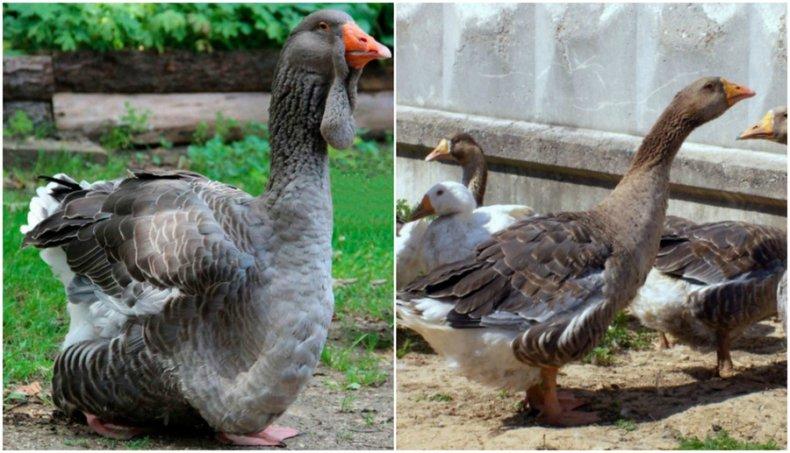
Tambov geese love walks and active movement. Physical activity and fresh air make them stronger, healthier, and grow faster. Therefore, the geese must be driven out for a walk in the corral every day. There, the birds should spend 8-10 hours. In the summer, they can be kept in the pen all day and only for the evening they can be driven back to the barn.
Feeding rules
For the winter, food for geese is better prepared for future use. So they will be cheaper and will always be at hand. Both in winter and in summer, bourgeois women cook for birds from grain, grated root crops and vegetables. Bone meal, fish waste, premixes, chalk and salt are added to them. The consistency of the mash should be moist. Fresh green grass is added to them. This feed ingredient is required, as geese are herbivorous birds.
Geese can nibble the grass in the pasture, so many poultry farmers do not mow the grass, but simply graze the livestock in the nearest meadow. In the evening, they feed once with mash. Before the start of oviposition, the geese are fed with vitamin preparations and premixes. The mixtures prepare the body for the period when a lot of energy and nutrients will be expended.
Goslings are first fed with a mixture of boiled eggs, cottage cheese, small grains, and chopped greens. When it is 1.5 weeks old, they begin to feed grated roots and vegetables. By 1.5 months, they are transferred to an adult diet. Poultry is raised for fattening up to 5 months.
There is a scheme for feeding the Tambov geese using poultry feed. The compound feed is easy to use, the composition is selected and verified so that the mixture can satisfy the goose body's need for nutrients completely. When feeding with combined feeds, water should be constantly poured in the drinkers of the geese.
Breeding and cultivation
Tambov geese can incubate eggs themselves, up to 15 eggs are laid under them. After hatching, not only mothers, but also fathers take care of the brood. Goose families should be made up of purebred representatives of the breed, on average there should be 6-7 females for 1 male. When crossed with other breeds from the Tambov breeds, goslings are obtained that have the characteristics of both parents, they are often more tenacious and faster than their thoroughbred relatives.
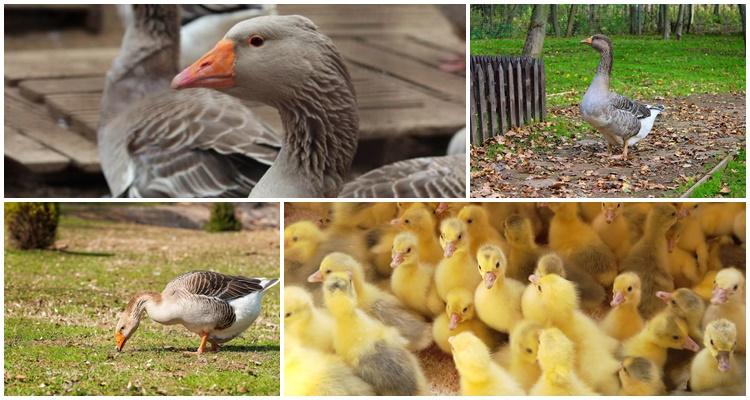
Frequent illnesses
Geese of the Tambov breed are healthy, strong, cold-resistant. They rarely get sick if they live in a clean, bright, warm and ventilated room.
But if the rules of maintenance and care are not followed, then the birds often get sick with infectious diseases. Without prevention and treatment, they can kill all livestock.
To prevent the emergence and spread of infection in the flock, you must remember to clean and change the litter, wash and disinfect the equipment. If there are signs of irregularities and disorders, you should consult your veterinarian. The doctor will be able to choose the appropriate treatment, determine how long it should last.
Digestive and metabolic disorders occur as a result of improper feeding. To eliminate the cause, you need to revise the diet, adjust it in favor of light, but nutritious food.
Tambov gray geese are bred in Ukraine and Russia, but are popular in many regions with different climates. Birds are appreciated by professionals and amateur poultry farmers for their fast growth, vitality, and egg production. The breed can be grown for meat for yourself or for sale in industrial or private mini-farms, as well as receive eggs for your own consumption.

